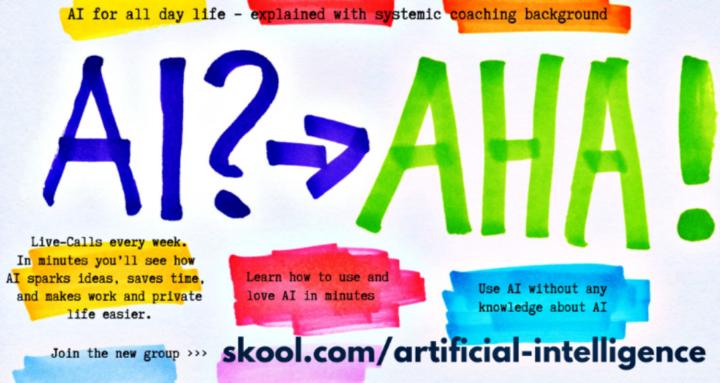
Write something
Human-Centered AI: Executive Playbook
Human-Centered AI – Executive Playbook Thesis: AI's economic potential is large; realized value depends on implementation philosophy. Systems that augment people deliver measurable productivity improvements; designs that reduce people to fallback validators create predictable control and safety gaps. The operating model is human-centered: AI as instrument; people as accountable decision-makers. Reference Pattern Macro potential. Credible modeling puts AI's potential at ~$13T of additional global output by 2030 (McKinsey Global Institute, 2018). Execution risk. Industry analysts forecast that >40% of "agentic AI" projects will be canceled by 2027 due to unclear value, governance, and integration complexity (Gartner prediction via Forbes — forecast, not fact). Field evidence. Large-scale call-center deployments report ~14–15% productivity gains, with larger lifts for less-experienced workers — a strong augmentation signal (MIT/Stanford, 2023–2024). Safety governance. U.S. regulators analyzed 13 fatal crashes involving Autopilot misuse and criticized insufficient driver-engagement controls, prompting a major recall and ongoing oversight (NHTSA primary documentation). Implementation signals. • IBM later sold key Watson Health assets after years of underperformance (source) • Amazon retired its recruiting model after bias was revealed (Reuters) • Google Duplex added disclosure commitments after public backlash about impersonation (The Verge)
0
0
Active Learning – Human in the Loop HITL
Active Learning – Human in the Loop HITL: Active learning strategically selects the most informative examples for labeling, minimizing annotation costs while maximizing model performance through intelligent query strategies. The engineering challenge involves designing effective sampling strategies, balancing exploration versus exploitation, implementing efficient query algorithms at scale, handling batch selection for parallel annotation, and maintaining diversity while focusing on uncertain examples. Active Learning Explained for Beginners - Active learning is like a student who asks the most important questions instead of randomly studying everything - imagine preparing for an exam by identifying exactly which practice problems will teach you the most, rather than doing every problem in the textbook. The AI similarly picks the most confusing or informative examples to learn from, getting smart faster with fewer labeled examples, like a curious student who knows what they don't know. What Makes Active Learning Efficient? Active learning reduces labeling requirements by focusing human effort on examples that maximize learning. Label efficiency: achieving target performance with 10-30% of labels versus random sampling. Query strategy: intelligent selection based on model uncertainty or expected improvement. Human-in-the-loop: leveraging human expertise where most valuable not uniformly. Iterative process: train → query → label → retrain cycles progressively improving. Cost reduction: minimizing expensive expert annotation in medical, legal domains. Exploration-exploitation: balancing uncertain regions with representative coverage. How Do Uncertainty Sampling Methods Work? Uncertainty sampling queries examples where the model is least confident about predictions. Least confidence: selecting examples with lowest maximum class probability. Margin sampling: smallest difference between top two class probabilities. Entropy-based: highest entropy in predicted probability distribution. Posterior variance: for regression, selecting highest predicted variance. Ensemble disagreement: querying where multiple models disagree most. Practical efficiency: simple to implement, computationally cheap, effective baseline.
0
0
Human-in-the-Loop Training
Human-in-the-Loop Training Human-in-the-Loop training integrates human feedback directly into machine learning pipelines, combining human intelligence with computational power to improve model performance and alignment. The engineering challenge involves designing efficient annotation interfaces, managing labeling costs and quality, orchestrating human-AI collaboration workflows, handling subjective human judgments, and scaling human involvement while maintaining consistency and reducing bottleneck effects. Human-in-the-Loop Training Explained for Beginners - Human-in-the-Loop training is like teaching a student driver with an instructor present - the AI attempts tasks while humans provide corrections, guidance, and take control when needed. Just as driving instructors intervene to prevent mistakes and demonstrate proper technique, humans in the loop correct AI errors, provide examples for difficult cases, and ensure the system learns safe, appropriate behaviors that pure data alone cannot teach. What Defines Human-in-the-Loop Systems? HITL systems strategically incorporate human judgment at critical points in machine learning pipelines. Human roles: annotating data, correcting predictions, providing feedback, defining objectives. Collaboration paradigm: humans and AI working together leveraging respective strengths. Active learning: AI requests human input for most informative examples. Interactive training: real-time human feedback during model learning. Quality assurance: humans validating AI outputs before deployment. Continuous improvement: ongoing human input refining deployed models. How Does Active Learning Reduce Labeling? Active learning selectively queries humans for labels on most informative examples maximizing learning efficiency. Uncertainty sampling: requesting labels for examples with highest model uncertainty. Query by committee: labeling examples where ensemble models disagree. Expected error reduction: choosing examples minimizing future prediction errors. Diversity sampling: selecting representative examples covering input space. Budget constraints: optimizing queries within annotation cost limits. Performance: achieving target accuracy with 10-50% fewer labels typically.
0
0
Artificial Intelligence for Humans
Artificial Intelligence for Humans: You have received a welcome message with your first free and priceless AI-Agent. Use it, tell me what you like and what you are accomplishing with it. Comment what you are interested in. And yes – we also discuss with AI how to cool down an argument, how to treat yourself way better. AI opens a lot of paths you never thought about.
1
0

Measuring Human AI Team Performance
Measuring Human AI Team Performance: Performance evaluation of human-AI teams requires metrics that capture both individual component performance and emergent team dynamics. The engineering challenge is developing measurement frameworks that assess efficiency, accuracy, and collaboration quality while identifying optimization opportunities, detecting degradation, and demonstrating value beyond either human or AI alone. Explained for People without AI-Background - Measuring human-AI teams is like evaluating a doubles' tennis team - you track not just each player's statistics but how well they coordinate, cover each other's weaknesses, and achieve results neither could accomplish alone, adjusting strategies based on what the metrics reveal. Performance Measurement Foundations - Baseline establishment comparing human-only, AI-only, and combined performance; demonstrating synergy value. - Multi-dimensional metrics beyond simple accuracy; speed, cost, consistency, and scalability factors. - Longitudinal tracking showing improvement over time; learning curves for human-AI collaboration. Efficiency Metrics for Hybrid Teams - Throughput, measuring items processed per hour; balancing speed with quality requirements. - Automation rate, showing percentage handled by AI alone; identifying opportunities for increased automation. - Human utilization tracking reviewer productivity; optimal workload without burnout. Accuracy Assessment in Collaborative Systems - Error rates stratified by difficulty; understanding performance across task complexity. - False positive and false negative analysis; different costs for different error types. - Precision-recall tradeoffs; optimizing for specific business objectives. Measuring Collaboration Effectiveness - Handoff efficiency between human and AI; measuring transition smoothness. - Complementarity metrics showing unique contributions; what each party brings to the team. - Conflict resolution rates when human overrides AI; understanding disagreement patterns.
1
0
1-11 of 11

skool.com/artificial-intelligence
Artificial Intelligence (AI): Machine Learning, Deep Learning, Natural Language Processing NLP, Computer Vision, ANI, AGI, ASI, Human in the loop, SEO
Powered by



